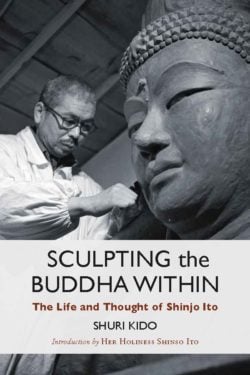Shuri Kido

Kido, known as the “far north poet,” has published several poetry books and essays and is one of the most important poets on the front line of contemporary poetry in Japan. He has translated many English poems into Japanese and has introduced works by Ezra Pound and T. S. Eliot to Japan. Kido has been a critic and columnist for various magazines and newspapers and has a profound knowledge of Japanese culture.
Books, Courses & Podcasts
Sculpting the Buddha Within
Sculpting the Buddha Within is the first major biography of Shinjo Ito, the founder of the Shinnyo-en tradition of Buddhism and one of the twentieth century’s most innovative spiritual teachers. Ito was schooled in Shingon, the millennium-old esoteric Buddhism of Japan, and used that as the basis for developing a unique lay practice grounded in the principles and concepts of the Mahayana version of the Nirvana Sutra.
Ito’s wish was to help his practitioners see their own potential for goodness so that they, too, would be inspired to work diligently to shape and give form to their inner buddha. Rather than encouraging his followers to believe in a fixed system of practice or beliefs, Ito taught how to live life in accordance with one’s buddha nature—and the gratitude, creativity, and happiness latent within it.

